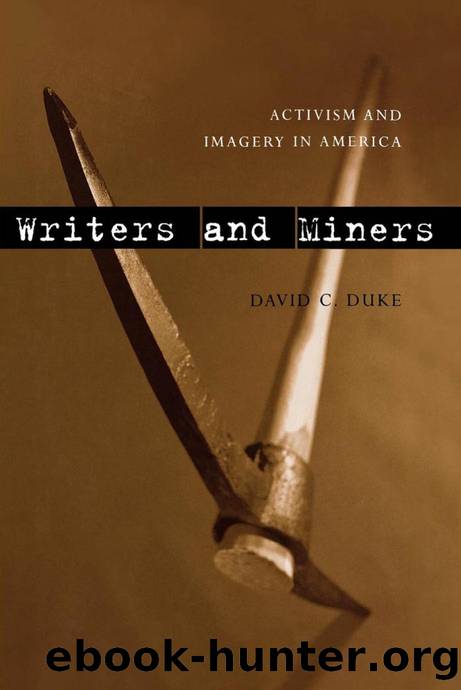Writers and Miners by Duke David C.;

Author:Duke, David C.; [Duke, David C.]
Language: eng
Format: epub
Publisher: University Press of Kentucky
Published: 2021-08-15T00:00:00+00:00
Chapter 5
COAL MINING FICTION FOR THE YOUNG
A good deal of childrenâs and adolescent literature touches in some way on the coal miner and the mining life. There is no intrinsic distinction between this type of literature and that created for adults, although subtle differences do exist. C.S. Lewis, for example, said that he never consciously set out to compose exclusively for children. While first toying with an idea, he discovered that âa childrenâs story is the best art-form for something you have to say: just as a composer might write a Dead March not because there was a public funeral in view but because certain musical ideas that had occurred to him went best into that form.â1
Still, there are those who argue that real differences in the genre are apparent. Critic and historian Paul Hazard wrote in the early 1940s from Nazi-occupied France, âChildren and grownups belong to different worlds. Time, deals so ruthlessly with the body, is only too often just as pitiless with the soul. Adults are rarely free; they are prisoners of themselves. Even when they play it is self-consciously and for a reason. They play in order to relax, to forget, to keep from thinking of the brief time that is still left to them. They seldom play for the sheer joy of playing.â Children are âfull of the exuberance of life, from morning to night they run, shout, quarrel, make up and fall asleep only to begin again next day at sunrise.â2 Rebecca J. Lukens points out that children âare different from adults in experience, but not in species . . . in degree but not in kind.â3 An author may accommodate these experiential limitations by using simpler vocabulary, clearer language, and shorter stories. Characters, plots, and themes may be less developed than in adult fiction. Linear time and action may be the glue that holds the work together.4 Children like to identify with the characters of a story, many of whom are the same age as the intended reading audience. Children are also attracted by the heroic: they encounter it on a daily basis. As Diana Wynne Jones suggests, âin every playground there are actual giants to be overcome and the moral issues are usually clearer than they are, say, in politics.â5 Regardless of the perspective from which critics approach childrenâs literature, most of it is still written by adults and often selected and purchased by adults. In fact, Peter Hunt suggests that âwe want to select what the children may or may not know, and at which stage in their development they know it.â6 It is from this adult perspective that this chapter will explore whether writers of childrenâs and adolescent literature approach the coal mining experience in ways similar to or different from those of writers and directors with adult audiences. In the childrenâs genre, are miners imaginary âothersâ or do they have voices of their own? Does the nature of their work define them or are they portrayed as human beings
Download
This site does not store any files on its server. We only index and link to content provided by other sites. Please contact the content providers to delete copyright contents if any and email us, we'll remove relevant links or contents immediately.
4 3 2 1: A Novel by Paul Auster(11788)
The handmaid's tale by Margaret Atwood(7447)
Giovanni's Room by James Baldwin(6808)
Asking the Right Questions: A Guide to Critical Thinking by M. Neil Browne & Stuart M. Keeley(5355)
Big Magic: Creative Living Beyond Fear by Elizabeth Gilbert(5351)
Ego Is the Enemy by Ryan Holiday(4956)
On Writing A Memoir of the Craft by Stephen King(4662)
The Body: A Guide for Occupants by Bill Bryson(4581)
Ken Follett - World without end by Ken Follett(4443)
Bluets by Maggie Nelson(4261)
Adulting by Kelly Williams Brown(4232)
Eat That Frog! by Brian Tracy(4149)
Guilty Pleasures by Laurell K Hamilton(4116)
White Noise - A Novel by Don DeLillo(3829)
The Poetry of Pablo Neruda by Pablo Neruda(3814)
Fingerprints of the Gods by Graham Hancock(3738)
Alive: The Story of the Andes Survivors by Piers Paul Read(3730)
The Book of Joy by Dalai Lama(3697)
The Bookshop by Penelope Fitzgerald(3619)
